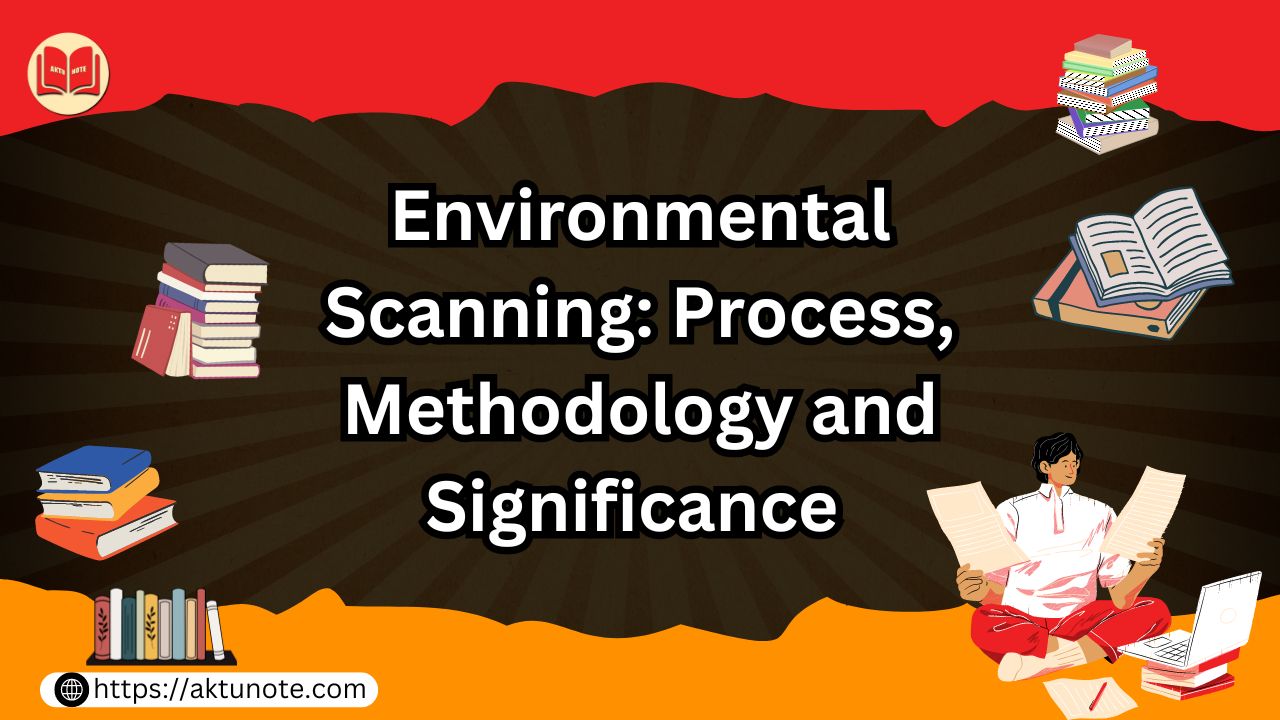Environmental scanning is like keeping an eye on both the weather and the traffic before you head out—it’s all about being prepared for both the immediate obstacles and the conditions in the distance. In the business world, this means understanding the micro (internal) and macro (external) factors that could impact an organization’s performance. Let’s break down how companies scan these micro and macro environments to navigate through challenges and seize opportunities effectively.
Environmental scanning is a fundamental strategic tool that involves the continuous monitoring and analysis of both micro and macro environmental factors that can impact an organization. By thoroughly examining these internal (micro) and external (macro) elements, organizations can foresee potential challenges and opportunities, facilitating proactive strategic planning. This article explores the methodologies for environmental scanning from both micro and macro perspectives, highlighting their importance in the strategic decision-making process.
Understanding Environmental Scanning
Environmental scanning is the process through which businesses collect information about the elements that might affect their operations and strategy. This involves looking at both micro factors, which are the internal elements specific to the company, and macro factors, which encompass the broader external forces shaping industry and market dynamics. It’s like checking both your home’s needs and the neighborhood dynamics before making a big family decision.
Micro Environment
The micro environment refers to the internal factors within an organization that directly affect its operations and success.
The micro environment includes all the internal factors that influence a company’s operations and potential for success. These elements are typically under the organization’s control and include aspects such as:
Employees
Workforce capabilities, morale, and productivity directly influence organizational output and service quality.
Management
Leadership styles, strategic decisions, and managerial capabilities shape the organization’s culture and operational efficiency.
Organizational Structure
How a company is structured affects communication, decision-making processes, and operational workflows.
Resources
Availability of financial, physical, and technological resources determines an organization’s capacity to execute strategies and respond to market demands.
Corporate Culture
The values, norms, and practices that pervade an organization influence employee behavior and can significantly impact performance and compliance.
Macro Environment
The macro environment consists of external factors that are generally beyond an organization’s control but have the potential to significantly affect its performance.
The macro environment consists of external factors that are outside of the company’s control but have a significant impact on its operations. These factors are like the neighborhood your house is in—no matter how much you manage your internal environment, outside influences can still have a big impact. Macro factors include:
Economic Conditions
Economic trends such as inflation rates, unemployment levels, and economic growth influence consumer purchasing power and business operations.
Political and Legal Factors
Government policies, regulations, and legal issues can affect how a company operates and must be carefully monitored to ensure compliance and anticipate changes.
Sociocultural Trends
Changes in societal values, cultural norms, and consumer behaviors can impact market dynamics and business strategies.
Technological Advances
Technological developments can revolutionize industries, creating new opportunities for innovation and efficiency but also introducing threats such as obsolescence.
Environmental Factors
Environmental concerns and regulations can affect how companies operate, particularly in industries like manufacturing and energy.
The Process of Environmental Scanning
Environmental scanning is the systematic process of gathering and analyzing information about an organization’s internal and external environment. This involves identifying trends, events, and relationships that could potentially impact the business. By understanding these factors, organizations can anticipate future challenges and opportunities, allowing them to make informed strategic decisions.
Data Collection
Gather information from various sources about both micro and macro factors. This can include internal reports, market research, industry news, and competitive intelligence.
Analysis
Analyze the collected data to identify trends, opportunities, and threats. This is like sitting down with your family to discuss how changes around and within your home could affect your lifestyle.
Action
Develop strategies based on this analysis to capitalize on opportunities and mitigate threats. It’s like deciding to install solar panels after noticing rising energy costs in your area.
Monitoring
Continuously monitor the environment since changes can happen quickly. It’s like always having an ear to the ground for neighborhood news or shifts in local policy.
Methodologies for Environmental Scanning
To effectively scan both micro and macro environments, organizations employ various methodologies that help gather relevant data and insights. These methodologies include both qualitative and quantitative approaches:
PESTEL Analysis (Macro Analysis)
PESTEL analysis is a framework used to systematically assess the Political, Economic, Social, Technological, Environmental, and Legal factors in the macro environment. This tool helps organizations identify the broader trends that could impact their strategies and operational models.
SWOT Analysis (Micro and Macro Analysis)
SWOT analysis involves identifying the Strengths, Weaknesses, Opportunities, and Threats related to an organization. This tool integrates both micro and macro perspectives, assessing internal resources and capabilities (micro) alongside external possibilities and challenges (macro).
Porter’s Five Forces (Micro Analysis)
Porter’s Five Forces is primarily used to evaluate the competitive environment within an industry. It examines the intensity of competitive rivalry, the threat of new entrants, the bargaining power of buyers and suppliers, and the threat of substitute products or services, providing insights predominantly about the micro environment.
Scenario Planning (Micro and Macro Analysis)
Scenario planning involves creating detailed, hypothetical scenarios to envision possible future states of both the organization and the external environment. This method helps in preparing for a range of potential futures by considering how macroeconomic shifts might interact with internal factors.
Significance of Environmental Scanning
The process of environmental scanning is crucial for several reasons:
Informed Decision-Making
By understanding both the internal workings and the external forces impacting an organization, leaders can make more informed, strategic decisions.
Proactive Strategy Development
With insights into potential shifts in the macro environment and internal capabilities, organizations can develop strategies that are proactive rather than reactive.
Risk Management
Environmental scanning helps identify risks arising from both micro and macro factors, allowing organizations to devise effective mitigation strategies.
Competitive Advantage
Organizations that effectively scan and respond to their environments often sustain a competitive advantage by being first to leverage new opportunities or by avoiding emerging threats.
Challenges in Environmental Scanning
Despite its benefits, environmental scanning presents challenges, including:
Information Overload
Discerning relevant information from vast data sources can be overwhelming and may require sophisticated analytical tools.
Dynamic Environments
Rapid changes in both micro and macro environments require constant vigilance and agility in response strategies.
Bias and Subjectivity
Subjective interpretations of environmental data can lead to skewed analyses and misguided strategies.
For More Content Check Out :- KMBN 301
Conclusion
Environmental scanning is a crucial strategic process that enables businesses to stay agile and competitive in a rapidly changing world by systematically assessing both micro and macro factors that can impact their operations. By understanding these internal and external landscapes, companies can make informed decisions that not only respond to current conditions but also anticipate future challenges, much like being well-prepared for both daily household needs and broader community dynamics. This proactive approach allows organizations to adapt strategies, maintain resilience, and ensure long-term success and competitiveness in a complex and volatile business environment.

